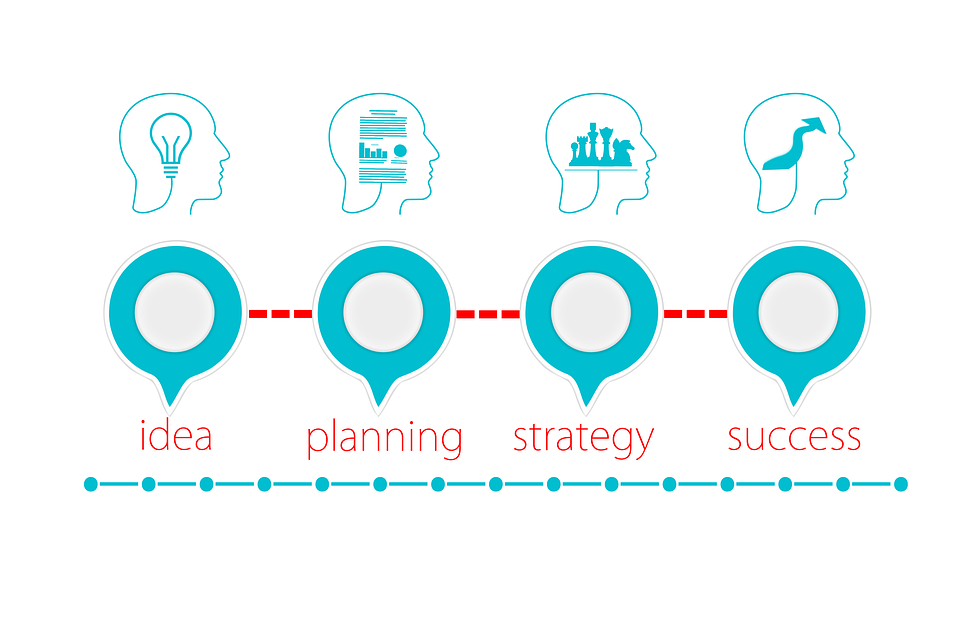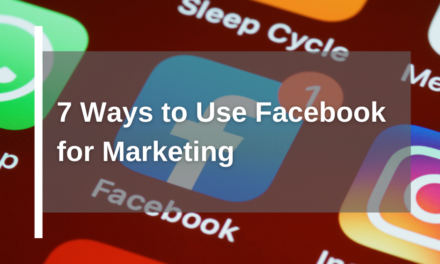Marketing choices are now not exclusively based on experience and feelings. Despite technological advancements, contemporary marketers adhere to tried and true performance gauges such as the return on investment (ROI) fraction, which has existed since 1914, to decide the effectiveness of their lead creation endeavors.
The enduring appeal of ROI lies in its ease of use. A high return on investment indicates that the benefits are greater than the expenses associated. Contrarily, a low result implies that an error may have occurred when choosing the audience, the information delivered, the product, the time the email was sent was inappropriate, or the ad wasn’t precise enough.
What criteria should we use to decide which gears require oiling? That is where data comes in. Marketing using data is becoming increasingly popular as a method of closing sales in the B2B setting. Forbes conducted a study in which 64% of executives strongly affirmed that data-driven marketing is critical for success in the present rough global economy.
What Is Data-Driven Marketing?
Data-driven marketing (DDM) involves utilizing high-quality data to create more effective lead-generation campaigns.
Marketing approaches based on data require the division of data to gain an in-depth knowledge of the intended audience. Analyzing account information based on distinct criteria makes it easier to categorize similar target users into special categories, thus increasing the likelihood of success when taking further action.
Using intent data strategies is highly sought-after when creating DDM strategies. They can be used to understand what digital users are consuming online, enabling you to refine retargeting efforts, inflowing material, and all-around operations.
Combining data from several places is necessary to gain a comprehensive knowledge of the customer.
Adobe uncovered that numerous mature digital companies still employ CRM data as their primary source to bolster their data-driven marketing insights (48%). Yet, 34% of firms are starting to explore using predictive analytics to upgrade their DDM practices.

FREE BOOK
Discover the 5 Compelling Book Titles Types that create an ‘I Want That…’ response.
That said, all data sources come into play to craft the most authentic DDM experience, which includes the following core pillar aspects:
- Personalized customer experience.
- Top-notch data management.
- Well-rounded buyer personas.
- Optimized budget campaigns.
- Authoritative inbound content.
- Clean sales funnels.
Companies that conduct business-to-business activities to get the most out of the DDM approach need to be amenable to data and work it into their systems, procedures, and ethos. It is strongly recommended to give your full attention to the task because only focusing superficially on data-driven practices will bring unsatisfactory outcomes.
Four benefits of using a Data-Driven Marketing Strategy
1# Mental wealth: Minimizing stress.
We make decisions based on instinct, which is a powerful indicator. In work decisions, it is not essential to employ it. The weight of stress is often increased when one is required to make choices in marketing that come from the gut.
When marketing campaigns fail, it’ll be your failure. When marketing campaigns succeed, it’ll be your success. No matter what, anxiety will follow you in this situation. The stress you experience will affect your overall attitude regarding your job and life.
Rather than relying on intuition, data-driven marketers can make decisions based on facts. You can make decisions backed up with proof and relieve anxiety.
#2 Targeting the right customers.
Marketers can use a database to isolate useful and applicable information. Consequently, these discoveries will become solidified comprehension, plans and efforts.
Consequently, you will be able to communicate with your clientele through the relevant channel and appropriate communication when it matters most. This will ensure a great customer experience. Data can reveal not just what people like but also point out which channels are best for connecting with them.
Additionally, this will aid you in selecting your promotional methods effectively. Stop you from squandering your funds on an ineffective advertising effort.
#3 Personalization: crafting relevant messages.
Customers are used to receiving personalized messages from campaigns. Customers no longer accept the “one size fits all” method. Instead, they perceive it as an out-of-date or annoying tactic from a company.
An investigation revealed that nearly three-quarters of individuals are displeased when viewing unimportant material from companies. Nearly four out of every five individuals will not even think about a proposition unless the company customizes its communication based on what has happened to them. So, customer experience really matters.
Your viewers desire to view a clever brand that connects with them. Customer information can be utilized to create significant communications with the marketing division.
For example:
Suppose an organization producing shoes identifies that their target demographic of 25-34-year-old female shoppers buys winter boots every 24-month period. In that case, they could use those insights to create a tailored message with a wintry motif to amaze them.
The return on investment of this type of campaign is much greater than other conventional campaigns. Organizations that utilize personalization receive up to 5-8 times a higher gain on their campaign investments.
Learn how our marketing strategies based on data can improve your company. Click here!
#4 Product Development.
What works and what doesn’t? Your database will provide insights into the advantages and disadvantages of your products, enabling you to formulate improved offerings that suit your customers’ needs.
5 Data-Driven Marketing Strategies for B2B Companies
Depending on the goal you are striving to reach, DDM initiatives can either augment short-term performance initiatives or help construct sustained branding initiatives.
Here are some data-driven marketing examples that your business can apply to raise its performance:
1. Track your website interactions.
Every website provides multiple ways for people to post their thoughts, queries, or contact data. This implies that, with proper handling, all interactions can provide important information based on data. The most common data applications are:
- User experience. This involves behavioral traits such as in-page clicks, spent time, mouse movement, navigation patterns, and bounce rate, just to name a few. This information can make your website more suitable for retaining visitors.
- Content performance. Webinars, blog posts, newsletters, white papers, and every other content format have different intent. Analyzing the most popular styles and topics among users makes it possible to craft more authoritative content.
- Engagement. While web pages are expected to convert customers, their main goal should be to educate prospects. Live chats and chatbots bridge understanding the user’s necessities and the buyer’s journey.
2. Refine your remarketing efforts.
Once a visitor has left your website, it is important to use remarketing tactics to ensure that your brand sticks in their mind and they think of it first when they are ready to decide about a transaction.
Data is tremendously helpful in determining when and how to deploy personalized advertisements based on the interactions that take place on the landing page. Despite this, B2B leads should be reached using more subtle strategies. Here are some DDM techniques that are aimed at producing meaningful conversations:
- Tweak your message. Most B2B prospects will need multiple touchpoints with brands before making a decision, so design a multistep ad structure that nurtures them through organic information about your product, experience, success rates, and other persuading assets.
- Diversify your content. Different landing pages with distinct angles, content on social media, and mentions on topic-related panels allow a brand to maximize its credibility.
- Go for the conversion. B2B prospects don’t have time to waste, so be ready to trigger more hard-selling ads as soon as the awareness and interest stages of the buyer’s journey are over.
3. Filter your prospect selection.
Seasoned marketers understand that not all leads need to be pursued. Data-driven marketing has a big role in making it easier to tell which leads are the most advantageous to the company and likely to make a purchase.
Examples of meaningful information that can help get a better idea of what a potential customer might expect include where they live, how old they are, their gender, how big their company is, how much education they have, and their personal interests.
4. Integrate data-centered technology.
CDPs(Customer Data Platforms) are interactive collections of information that accumulate pertinent sales and behavior data concerning your customers, forming thorough and continuously evolving singular data accounts.
This tool can help to save time, resources, and money when accumulating information about people or businesses, such as demographic details, thought processes, behaviors, organizational aspects, and financial transactions. It hastens the rate of converting the highest quality of prospective customers.
New B2B companies engaging in data integration might not be able to fully take advantage of all the data given by a CDP. However, most data providers will help them create the most suitable setup for their desired objectives.
5. Personalize your email campaigns.
In a business-to-business setting, each opened or responded to message is a measure of success. Data can be instrumental in getting readers to feel as if you understand their circumstances. It is claimed by Hubspot that personalization can enhance email interaction, according to roughly one-fifth of marketers.
Using basic yet purposeful touches like using the lead’s name, understanding the circumstances of their area, utilizing compelling problems or answers in the topic, and sending the mail at the optimal timing can be essential to the campaign’s success.
Additionally, by utilizing data-driven processes, marketers can fully grasp which email sequences have achieved the greatest success, which calls to action yielded the most clicks, what material was the most popular, which emails were responded to, and why.
This information helps develop more complex email designs that are likely to make recipients open and click on them more often.
Here Is What Market Leaders Think About Data-Driven Marketing.
Marketing that utilizes data to inform decisions is not something that only a few companies take advantage of; in fact, the majority of industry leaders make use of it. It can be used by any company or organization. I understand that measurements are essential for you, so I thought it would be beneficial to illustrate some sector data.
- 40% of organizations aim to increase data-driven marketing budgets.
- 64% of marketers report that data-driven strategies are crucial in their strategy.
- Two out of three marketers report data-driven decisions to be more effective than gut-driven decisions.
- With campaigns that leverage data-driven personalization, marketers report 5-8x ROI for their campaign spend.
- About 3 of every four marketing leaders surveyed (76 percent) base decisions on data analytics.
- 32% of marketers referred to marketing analytics and insights as the most critical elements supporting their marketing approach over the last 18 months.
- According to this survey, data-driven marketing sits on the throne by getting 16% of annual budgets.
Now, you may ask:
- How exactly does this process work?
- How is the campaigning process?
- How do you implement data-driven strategies?
- How do you determine which campaigns to execute?
In the final section, we hope to thoroughly explain the growth marketing process.
Why Data-Driven Marketing and Growth Marketing Approach Are the Perfect Couple.
In developing marketing strategies, the foundation consists of two key aspects: measurement and testing.
Measurement is everything.
Growth marketing is result and data-oriented. The attitude: if you cannot track your advertising activities, it is probably best that you do not pursue them.
This assessment aims to identify what is effective and what is not. You need to know why a campaign is successful. You can use the successful elements of your campaigns, repeat them, and improve them further.
If you understand why a campaign was unsuccessful, you can figure it out by examining the data. You could have an improved opportunity to gain insight from your errors and compose a more effective marketing strategy in the future.
In the end, you will understand what you are doing and why you are doing it. You’ll skip the spray-and-pray approach.
Experimentation and constant improvement.
Imagine the usual way. You and/or your agency meeting with the group, deciding on a brilliant campaign concept to invest in, and hoping it will be successful are all part of the process.
In growth marketing, this is downright madness. Instead, we do experiments. Let’s open up about why we call it an experiment.
Investigations may last a few days or weeks, have scientific principles at the core, begin with a suggested idea, and have room for alterations. In growth marketing, we use the Growth Marketing Canvas to develop creative ideas using our current data.
These concepts share some similarities: they can be implemented and gauged.
Instead of investing large amounts of money without research, let’s put it into longer intervals. Marketing that focuses on growth starts by comprehending what appeals to customers. Or what doesn’t work. You can confidently invest in your ideas once they have been reviewed and approved.
In summary, if you fail, you will do so with only a minimal setback (however, you can always assess your progress and make improvements). If you are successful, you can be even more successful (this applies here too).
Discover concepts, evaluate the achievable ones, experiment, execute, and assess the outcomes.
Obtain the data and devise a new test based on the results.
If the campaign succeeds, you can increase your investment two to three times.
If you notice an opportunity for improvement, make changes and do another cycle.
During this experiment, you will collect a considerable amount of information. This will give you the knowledge and tools to gain insight into your customers and discover what motivates them.
We are happy to inform you that this strategy is being used by corporations such as Unilever, P&G, Neuhaus and many other small- and medium-sized businesses and start-ups.
Guest Posts Disclaimer
The views expressed in this post do not represent the views of 90-Minute Books. The information has not been verified and should be considered an opinion. You are always advised to do independent research.











